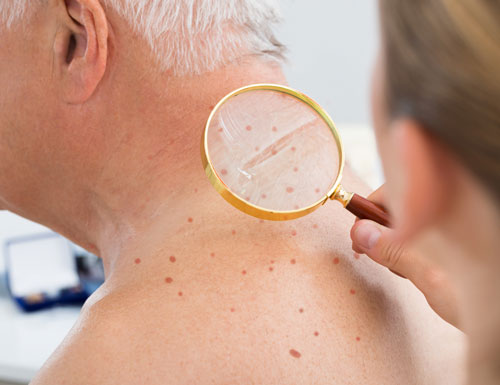If you have been to a dermatologist, the issue of a skin biopsy may have come up.
 What is a skin biopsy? A skin biopsy allows the physician to make a diagnosis of a rash or a worrisome skin lesion, for example when your doctor suspects a skin cancer.
What is a skin biopsy? A skin biopsy allows the physician to make a diagnosis of a rash or a worrisome skin lesion, for example when your doctor suspects a skin cancer.
It is a procedure during which a small piece of skin is cut and then sent to a pathologist. A pathologist is a doctor that looks at the cells of the tissue and makes a diagnosis (when possible).
A potential order of events is as follows:
- Your physician explains the procedure and obtains your consent to do the procedure.
- The area may be photographed.
- The area is cleaned and numbed with an anaesthetic medication. You will feel a prick and some stinging as the medication is injected into your skin.
- A small piece of skin is obtained either by a scalpel, a special biopsy blade, or by a cookie cutter like device.
- Depending on how much and how the skin is taken, stitches may be placed. If stitches are not placed, bleeding may be stopped by application of certain chemicals or via a cautery device.
- The area is bandaged.
- Wound care is reviewed.
- The tissue is sent to a pathologist to help render a diagnosis.
Step 4 alludes to the different types of skin biopsies.
- A Shave biopsy is usually done with a blade and does not require stitches.
- A Punch biopsy uses a special cookie cutter device to obtain skin. Stitches are frequently placed when a Punch biopsy is taken.


